|
Books Should Be Free Loyal Books Free Public Domain Audiobooks & eBook Downloads |
|
|
Books Should Be Free Loyal Books Free Public Domain Audiobooks & eBook Downloads |
|
Essay/Short Nonfiction |
|---|
|
Book type:
Sort by:
View by:
|
By: George Washington Greene (1811-1883) | |
|---|---|
 Visits To The Dead In The Catacombs Of Rome
Visits To The Dead In The Catacombs Of Rome
This essay of a cultured observer, for many years United States consul in Rome, appeared in Harper's New Monthly Magazine, vol 10, issue 59, April, 1855, pp 577 - 600. | |
By: George Wharton James (1858-1923) | |
|---|---|
 What the White Race May Learn from the Indian
What the White Race May Learn from the Indian
People learn from other people, and races have forever learned from other races. Herein we are treated to an in-depth understanding of categorized social characteristics of the Native American peoples, primarily those of the western U.S. as they existed at the time of book publication . 'In dealing with [the Native Americans] as a race, a people, therefore, I do as I would with my own race, I take what to me seem to be racial characteristics, or in other words, the things that are manifested in the lives of the best men and women, and which seem to represent their habitual aims, ambitions, and desires.' - Summary by Roger Melin & book foreword | |
By: Giacomo Leopardi (1798-1837) | |
|---|---|
 Essays and Dialogues
Essays and Dialogues
"We would no more choose to feed the minds of our countrymen and women with the despairing utterances of the pessimist poet, than we would their bodies with hasheesh. Such melancholy as his clothed in such eloquent words may be the luxury of the idle; it is poison to those who have work to do in the world. It shuts out hope, the very spring of energy; it makes the cheerful steady pursuit of duty a thing utterly beyond human powers. For we can none of us stand alone. Either in human or divine love we must find the mainspring of all life worth living... | |
By: Giles Lytton Strachey (1880-1932) | |
|---|---|
 Eminent Victorians
Eminent Victorians
On Modern Library's list of 100 Best Non-Fiction books, "Eminent Victorians" marked an epoch in the art of biography; it also helped to crack the old myths of high Victorianism and to usher in a new spirit by which chauvinism, hypocrisy and the stiff upper lip were debunked. In it, Strachey cleverly exposes the self-seeking ambitions of Cardinal Manning and the manipulative, neurotic Florence Nightingale; and in his essays on Dr Arnold and General Gordon, his quarries are not only his subjects but also the public-school system and the whole structure of nineteenth-century liberal values. | |
By: Goldsworthy Lowes Dickinson (1862-1932) | |
|---|---|
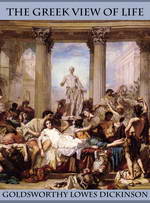 The Greek View of Life
The Greek View of Life
“With the Greek civilisation beauty perished from the world. Never again has it been possible for man to believe that harmony is in fact the truth of all existence.”This elegantly-written work provides a splendid introduction to the Greeks of the classic period: how they thought, wrote, and organised their lives and loves. Although it dates from the 1890s, there is very little about it that has dated. To its author’s credit, the subject of “Greek love” is dealt with in a sane and factual context - despite the judicial assassination of Oscar Wilde going on in the background... | |
By: Grant Allen (1848-1899) | |
|---|---|
 Post-Prandial Philosophy
Post-Prandial Philosophy
| |
By: Grenville Kleiser (1868-1953) | |
|---|---|
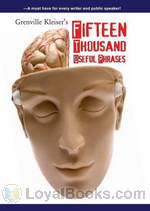 Fifteen Thousand Useful Phrases
Fifteen Thousand Useful Phrases
Fifteen Thousand Useful Phrases is a practical handbook written by Grenville Kleiser. Grenville is known for his writings on humor, positive thinking and inspirational thought. This serves as a handbook of pertinent expressions, striking similes and terms for embellishing speech and literature. This book can be used to improve vocabulary for reading, writing and speaking alike. Through mastery of words, the most powerful and perfect expression of thought can be delivered orally. Choosing the correct words conveys ideas in a crisp and clear way that will hold and audience's attention... | |
By: H. Bolingbroke Mudie (1880-1916) | |
|---|---|
 The Esperantist, Vol. 1, No. 1
The Esperantist, Vol. 1, No. 1
| |
 The Esperantist, Vol. 1, No. 4
The Esperantist, Vol. 1, No. 4
| |
 The Esperantist, Vol. 1, No. 3
The Esperantist, Vol. 1, No. 3
| |
 The Esperantist, Vol. 1, No. 5
The Esperantist, Vol. 1, No. 5
| |
 The Esperantist, Vol. 1, No. 2
The Esperantist, Vol. 1, No. 2
| |
By: H. G. Wells (1866-1946) | |
|---|---|
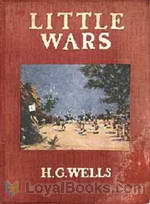 Little Wars (A Game for Boys)
Little Wars (A Game for Boys)
Miniature wargaming got its start with the publication in 1913 of this thoroughly entertaining little account of how H.G. Wells, with certain of his friends, took their childhood toys and turned play into acceptable middle-aged sport by subjecting the exercise to the civilizing influence of actual rules. While wargaming progressed far past these beginnings, Wells observes how “little wars” with even his elementary rules can suggest the wholesale crudity of the real thing. “You have only to play at Little Wars three or four times to realise just what a blundering thing Great War must be... | |
By: H. L. Mencken (1880-1956) | |
|---|---|
 Prejudices, First Series
Prejudices, First Series
Mencken sharpens his pen and in a collection of short essays delivers acerbic opinions on issues and persons of the time. Among his targets in this volume are critics, H.G. Wells Thorstein Veblen, Arnold Bennett, William Dean Howells, Irvin S. Cobb. Mencken's critiques are delivered against a background of his own well known ethnic, racial, religious, and sectional prejudices. Not for the faint of heart, Mencken's prickly, yet unapologetic, prose reveals a window into American attitudes at the time they were written and their influences on the larger American culture. - Summary by DrPGould | |
By: H. M. (Henry Major) Tomlinson (1873-1958) | |
|---|---|
 Old Junk
Old Junk
| |
By: Hamilton Wright Mabie (1846-1916) | |
|---|---|
 Essays on Work and Culture
Essays on Work and Culture
The author investigates the world of work against a backdrop of culture. Each of the 25 essays focuses on one aspect of the topic. For example, the first essay, "Tool or Man?" looks at two views of man. One is that of strength as the provider of security. The other is that of aesthete, as an enthusiast of the arts or academics or religion. In our culture, provider of security is the winner every time. Man as a source of multiple talents cannot be allowed. As the author frames the argument, "Specialisation has been carried so far that it has become an organised tyranny... | |
 Under the Trees and Elsewhere
Under the Trees and Elsewhere
| |
By: Hannah More (1745-1833) | |
|---|---|
 Essays on Various Subjects Principally Designed for Young Ladies
Essays on Various Subjects Principally Designed for Young Ladies
| |
By: Harl Vincent (1893-1968) | |
|---|---|
 Astounding Stories 02, February 1930
Astounding Stories 02, February 1930
This is the second issue of the classic science fiction Astounding Magazine. It contains the finale of The Beetle Horde by Victor Rousseau, as well as stories by Harl Vincent, Charles Willard Diffin, Hugh B. Cave, Sophie Wenzel Ellis, Sterner St. Paul, Anthony Pelcher and Captain S. P. Meek. | |
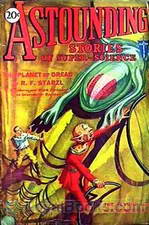 Astounding Stories 08, August 1930
Astounding Stories 08, August 1930
Issue eight of this seminal science-fiction magazine CONTENTS Murder Madness by Murray Leinster - the conclusion of this novel Earth the Maurader by Arthur J. Burks - Part 2 of a 3 Part novel as well as short Stories The Planet of Dread by R.F. Starxl, The Lord of Space by Victor Rousseau, The Second Satellite by Edmund Hamilton, Silver Dome by Harl Vincent and The Flying City by H. Thompson Rich | |
 Astounding Stories 10, October 1930
Astounding Stories 10, October 1930
Issue no. 10 of the magazine brings you:- Stolen Brains by Captain S.P. MeekThe Invisible Death by Victor Rousseau Prisoners on the Electron by Robert H. Leitfred Part 2 of Jetta of the Lowlands by Ray Cummings An Extra Man by Jackson Gee along with the Readers' Corner and interesting scientific facts | |
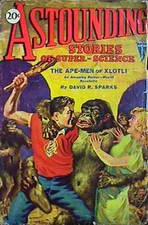 Astounding Stories 12, December 1930
Astounding Stories 12, December 1930
This issue includes "Slaves of the Dust" by Sophie Wenzel Ellis, Part B of "The Pirate Planet" by Charles W. Diffin, "The Sea Terror" by Captain S. P. Meek, "Gray Denim" by Harl Vincent, and "The Ape-Men of Xlotli" by David R. Sparks. | |
By: Harriet Martineau (1802-1876) | |
|---|---|
 Life in the Sick-room: Essays by an Invalid
Life in the Sick-room: Essays by an Invalid
Thinking she would be ill for the rest of her life, Harriet Martineau wrote these partly autobiographical essays about life in the sickroom. Considered ground breaking, it asserted that the sickroom is the sick person's place and not the doctor's. Sick people were able and willing to decide what is best for them. In England and abroad, people declared that "a sick person cannot write a healthy book" and that Harriet Martineau was definitely out of her senses. It would be interesting to see how much has changed. - Summary by Stav Nisser and Wikipedia. | |
By: Harriet S. Caswell (1834-) | |
|---|---|
 Stories and Sketches
Stories and Sketches
| |
By: Harry Bates, Editor | |
|---|---|
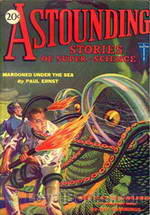 Astounding Stories of Super-Science, September 1930
Astounding Stories of Super-Science, September 1930
This is a collection of short science fiction stories by various writers, circa 1930. Writers include Paul Ernst, Miles Breuer, Ray Cummings, Sewell Wright, and others. | |
By: Helen Keller (1880-1968) | |
|---|---|
 The World I Live In
The World I Live In
The World I Live In by Helen Keller is a collection of essays that poignantly tells of her impressions of the world, through her sense of touch, smell, her imagination and dreams. My hand is to me what your hearing and sight together are to you. In large measure we travel the same highways, read the same books, speak the same language, yet our experiences are different. All my comings and goings turn on the hand as on a pivot. It is the hand that binds me to the world of men and women. The hand is my feeler with which I reach through isolation and darkness and seize every pleasure, every activity that my fingers encounter... | |
 Optimism, An Essay
Optimism, An Essay
Though blind, deaf, and left-handed too, it seemed nothing could hold Helen Keller back. For her graduation from Radcliffe College in 1903, this 23 year old idealistic, charming, ever-striving, pampered young essayist wrote: "I find myself looking forward with beating heart and bright anticipations to what the future holds for me. My share in the work of the world may be limited; but the fact that it is work makes it precious." She concludes, "America is confronted with the mighty task of assimilating all the foreigners that are drawn together from every country, and welding them into one people with one national spirit... | |
By: Henrietta Elizabeth Marshall (1867-1941) | |
|---|---|
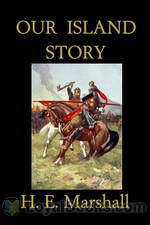 Our Island Story
Our Island Story
Tailored specially to make history more palatable and interesting to children, Our Island Story, by Henrietta Elizabeth Marshall, is a charmingly illustrated volume that promises hours of delight for parents as well as children. Beginning with the myths and legends about Albion, the author ensures that she captivates the child's imagination from the very first page. Unlike today's dry and non-committal history tomes that are prescribed in schools, Our Island Story is full of lyrical prose, literary allusions, heroic and tragic characters, the hunger for power and the glory of empire... | |
By: Henry Clement Notcutt (1865-1935) | |
|---|---|
 Interpretation of Keats's Endymion
Interpretation of Keats's Endymion
Endymion is the largest work by John Keats and was composed between April and November 1817. When it was published in April 1818 the critical reception was almost universally hostile. Since that time, many readers have found the poem dense and inaccessible, and have preferred to focus on the occasional gems of poetic commentary for which it has become famous. Feeling that the poem was both undervalued and misunderstood, in 1919 Professor Clement Notcutt published a lengthy essay, which could be considered a “user’s guide” to Endymion... | |
By: Henry David Thoreau (1817-1862) | |
|---|---|
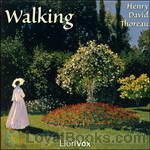 Walking
Walking
This was originally a lecture given by Thoreau in 1851 at the Concord lyceum titled “The Wild” . He revised it before his death and it was included as part of the June 1862 edition of Atlantic Monthly. This essay appears, on the surface, to be simply expounding the qualities of Nature and man’s place therein. Through this medium he not only touches those subjects, but with the implications of such a respect for nature, or lack thereof. | |
 Walking (Version 2)
Walking (Version 2)
This was originally titled "The Wild" and is a lecture given by Thoreau in 1851 at the Concord lyceum. "Walking" is an essay that explores the relationship between man and nature, trying to find a balance between society and our raw animal nature. | |
By: Henry L. Mencken | |
|---|---|
 Damn! A Book of Calumny
Damn! A Book of Calumny
Henry Louis “H. L.” Mencken (1880 – 1956) was an American journalist, essayist, magazine editor, satirist, acerbic critic of American life and culture, and a student of American English. Known as the “Sage of Baltimore”, he is regarded as one of the most influential American writers and prose stylists of the first half of the 20th century. Mencken is perhaps best remembered today for The American Language, a multi-volume study of how the English language is spoken in the United States, and for his satirical reporting on the Scopes trial, which he named the “Monkey” trial.” | |
By: Henry Parker Manning (1859-1956) | |
|---|---|
 Fourth Dimension Simply Explained
Fourth Dimension Simply Explained
In January 1909 a friend of the Scientific American paid the sum of 500$ which was to be awarded as a prize for the best popular explanation of the Fourth Dimension. The object being to set forth in an essay not longer than 2500 words the meaning of the term so that the lay reader could understand it. 245 essays were submitted, the 500$ prize was awarded to Lieut.-Col. Graham Denby Fitch, Corps of Engineers, USA, and the essay was published in the Scientific American of July 3rd 1909. Despite the character of the subject, extraordinary interest was manifested in the contest... | |
By: Henry Salt (1851-1939) | |
|---|---|
 Logic of Vegetarianism
Logic of Vegetarianism
With clear logic and entertaining dialogues, the author presents many reasons for a vegetarian rather than a “flesh-eating” diet, and his arguments for not eating meat are as compelling today as when they were written. (Lee Smalley ) | |
By: Henry Van Dyke (1852-1933) | |
|---|---|
 Little Rivers; a book of essays in profitable idleness
Little Rivers; a book of essays in profitable idleness
| |
 Days Off And Other Digressions
Days Off And Other Digressions
| |
By: Henry W. Lucy (1845-1924) | |
|---|---|
 Faces and Places
Faces and Places
Faces and Places is a collection of articles on nineteenth century travel, events and personalities by the British journalist Henry Lucy, who wrote for the Daily News, a London newspaper. His open letter To Those About to Become Journalists rings as true today as when it was written.The first article, “Fred” Burnaby, includes a lively account of a balloon trip, while Night and Day on the Cars in Canada and Easter on Les Avants relate Lucy’s experiences of rail travel at that time. Other travel tales (A Night on a Mountain, Mosquitoes and Monaco, and Oysters and Arcachon) provide an insight into the Victorian Englishman’s attitude to Europe... | |
By: Herbert Allen Giles (1845-1935) | |
|---|---|
 Chinese Sketches
Chinese Sketches
Herbert Giles was in the diplomatic service in China from 1867 to 1893. His frank observations on Chinese culture and people form the basis of these short essays, published in 1876. On his retirement, he returned to England and served as the Chair of Chinese at Cambridge for 35 years. | |
By: Herbert W. Collingwood (1857-1927) | |
|---|---|
 Hope Farm Notes
Hope Farm Notes
“Most of these notes were originally printed in the Rural New-Yorker from week to week and covering a period of about 20 years. . . . From the very first the object of these notes has been to picture simply and truthfully the brighter, cheerful side of Farm Life.” Herbert W. Collingwood gives us a delightful collection of essays reflecting his homespun wisdom and wit from the rural setting of the farm in early twentieth century America. He touches on subjects from baseball to Christmas, all reflecting his treasured values of home and family. - Summary by Larry Wilson | |
By: Hilaire Belloc | |
|---|---|
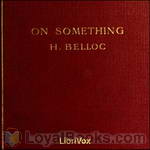 On Something
On Something
“Now that story is a symbol, and tells the truth. We see some one thing in this world, and suddenly it becomes particular and sacramental; a woman and a child, a man at evening, a troop of soldiers; we hear notes of music, we smell the smell that went with a passed time, or we discover after the long night a shaft of light upon the tops of the hills at morning: there is a resurrection, and we are refreshed and renewed.” – Hilaire Belloc | |
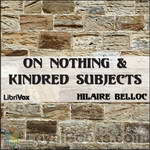 On Nothing & Kindred Subjects
On Nothing & Kindred Subjects
“I knew a man once, Maurice, who was at Oxford for three years, and after that went down with no degree. At College, while his friends were seeking for Truth in funny brown German Philosophies, Sham Religions, stinking bottles and identical equations, he was lying on his back in Eynsham meadows thinking of Nothing, and got the Truth by this parallel road of his much more quickly than did they by theirs; for the asses are still seeking, mildly disputing, and, in a cultivated manner, following the... | |
 This, That, and the Other
This, That, and the Other
“When Fame comes upon a man well before death then must he most particularly beware of it, for is it then most dangerous. Neither must he, having achieved it, relax effort nor (a much greater peril) think he has done his work because some Fame now attaches thereto.” -- Hilaire Belloc | |
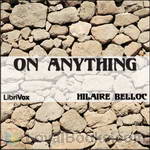 On Anything
On Anything
"Long before I knew that the speech of men was misused by them and that they lied in the hearing of the gods perpetually in those early days through which all men have passed, during which one believes what one is told, an old and crusty woman of great wealth, to whom I was describing what I intended to do with life (which in those days seemed to me of infinite duration), said to me, ( You are building castles in Spain.' I was too much in awe of this woman not on account of the wealth, but on account... | |
 On
On
Hilaire Belloc, French by birth, British by naturalization, was a diverse and prolific writer of the early 20th century. His writing runs the range from poetry, political writings and children’s stories. He was a close friend, and sometimes collaborator with fellow Catholic G.K. Chesterton. This book is a collection of essays and other short writings on a vast array of subjects ranging from observations on Bad Verse and Mumbo-Jumbo to Sailing the Seas and Hatred of Numbers. - Summary by Larry Wilson | |
 On Everything
On Everything
Hillaire Belloc of French by birth, British by naturalization was a diverse and prolific writer of the early 20th century. His writing runs the range from poetry, political writings and children’s stories. He was a close friend, and sometimes collaborator with fellow Catholic G.K. Chesterton. This book is a collection of essays and other short writings on a vast array of subjects ranging from observations on the barber, the duel, reflections on war and religion. Some are in the form of drama, dialogue and letters but always engaging with wit and satire. - Summary by Larry WilsonProof-listened by LynnJM and ADKreader | |
By: Horace Smith (1836-1922) | |
|---|---|
 Interludes being Two Essays, a Story, and Some Verses
Interludes being Two Essays, a Story, and Some Verses
| |
By: Ida B. Wells-Barnett (1862-1931) | |
|---|---|
 Southern Horrors: Lynch Law In All Its Phases
Southern Horrors: Lynch Law In All Its Phases
Thoroughly appalled and sickened by the rising numbers of white-on-black murders in the South since the beginning of Reconstruction, and by the unwillingness of local, state and federal governments to prosecute those who were responsible, Ida Bell Wells-Barnett wrote Southern Horrors, a pamphlet in which she exposed the horrible reality of lynchings to the rest of the nation and to the world. Wells explained, through case study, how the federal government's failure to intervene allowed Southern states... | |
By: Irvin S. Cobb (1876-1944) | |
|---|---|
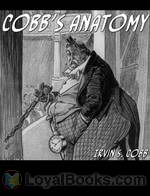 Cobb's Anatomy
Cobb's Anatomy
Irvin Shrewsbury Cobb was born on June 23, 1876. At seventeen years of age, he began writing for the Paducah Daily News, his hometown paper. At nineteen he became the managing editor; up to that point, our nation’s youngest. He worked as a columnist, a humorist and an author. But ‘horror,’ and ’short stories,’ are not why he is remembered. He is remembered because he was, and still is, funny. And although he is now dead–he died March 11, 1944–this work “Cobb’s Anatomy,” among others, has left an indelible mark upon mankind: a smile. | |
 Cobb's Bill-of-Fare
Cobb's Bill-of-Fare
| |
By: Isabella L. Bird (1831-1904) | |
|---|---|
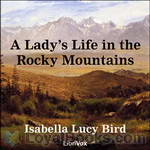 A Lady's Life in the Rocky Mountains
A Lady's Life in the Rocky Mountains
Isabella Bird began travelling while in her early twenties to help alleviate illness that had plagued her since childhood. She was a single woman in her early forties when she made her treck through the Rocky Mountains. A Lady’s Life in the Rocky Mountains details this fascinating account of her travels through a series of letters written to her sister, Henrietta. These letters are filled with beautiful, vivid descriptions of the scenery, the people she encountered, the way of life, and a mountain man named Jim Nugent, that was as rough as they come, but a complete gentleman with Ms... | |
By: Izaak Walton (1593-1683) | |
|---|---|
 The Compleat Angler
The Compleat Angler
The Compleat Angler is a celebration of the art and spirit of fishing in prose and verse. Walton did not profess to be an expert with the fly, but in the use of the live worm, the grasshopper and the frog "Piscator" could speak as a master. There were originally only two interlocutors in the opening scene, "Piscator" and "Viator"; but in the second edition, as if in answer to an objection that "Piscator" had it too much in his own way in praise of angling, he introduced the falconer, "Auceps," changed "Viator" into "Venator" and made the new companions each dilate on the joys of his favourite sport. | |
By: J. C. Meem | |
|---|---|
 Pressure, Resistance, and Stability of Earth American Society of Civil Engineers: Transactions, Paper No. 1174, Volume LXX, December 1910
Pressure, Resistance, and Stability of Earth American Society of Civil Engineers: Transactions, Paper No. 1174, Volume LXX, December 1910
| |
By: J. L. Campbell | |
|---|---|
 The Water Supply of the El Paso and Southwestern Railway from Carrizozo to Santa Rosa, N. Mex. American Society of Civil Engineers: Transactions, No. 1170
The Water Supply of the El Paso and Southwestern Railway from Carrizozo to Santa Rosa, N. Mex. American Society of Civil Engineers: Transactions, No. 1170
| |
By: J. O. Wilson | |
|---|---|
 Report of the Chief Librarian for the Year Ended 31 March 1958: Special Centennial Issue
Report of the Chief Librarian for the Year Ended 31 March 1958: Special Centennial Issue
| |
By: Jack London (1876-1916) | |
|---|---|
 Valley of the Moon
Valley of the Moon
The novel Valley of the Moon is a story of a working-class couple, Billy and Saxon Roberts, struggling laborers in Oakland at the Turn-of-the-Century, who left the city life behind and searched Central and Northern California for a suitable farmland to own. The book is notable for the scenes in which the proletarian hero enjoys fellowship with the artists' colony in Carmel, and he settles in the Valley of the Moon. | |
By: Jack Williamson (1908-2006) | |
|---|---|
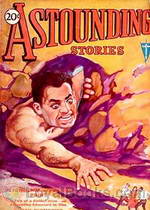 Astounding Stories 15, March 1931
Astounding Stories 15, March 1931
This issue includes "When the Mountain Came to Miramar" by Charles W. Diffin, "Beyond the Vanishing Point" by Ray Cummings, "Terrors Unseen" by Harl Vincent, the conclusion of "Phalanxes of Atlans" by F. V. W. Mason, and "The Meteor Girl" by Jack Williamson. | |
By: James Allen (1864-1912) | |
|---|---|
 As a Man Thinketh
As a Man Thinketh
“A man is literally what he thinks, his character being the complete sum of all his thoughts,” is one of the quotes from James Allen's classic self help books, As a Man Thinketh. Published in 1902, it provides many more such insightful concepts on the power of thought and its effect on a human being's personality and behavior. This volume is more of a literary essay than a complete book and its title is based on a Biblical proverb, “As a man thinketh in his heart, so is he.” Taking this piece of ancient wisdom further, James Allen explores the far-reaching effects of the inner workings of a person's mind and motivation... | |
By: James Anthony Froude (1818-1894) | |
|---|---|
 Short Studies on Great Subjects
Short Studies on Great Subjects
| |
By: James Elroy Flecker (1884-1915) | |
|---|---|
 Collected Prose
Collected Prose
Best remembered for his poetry, James Elroy Flecker was also a playwright, novelist and prose writer. This collection of his idiosyncratic prose writings includes The Last Generation (a short science fiction story), short sketches, a dialogue, and several critical studies. | |
By: James Huneker (1857-1921) | |
|---|---|
 Unicorns
Unicorns
An engaging collection of essays about artists, composers, writers, and, of course, unicorns. - Summary by Stav Nisser | |
By: James Russell Lowell (1819-1891) | |
|---|---|
 My Garden Acquaintance
My Garden Acquaintance
| |
By: Jane Austen (1775-1817) | |
|---|---|
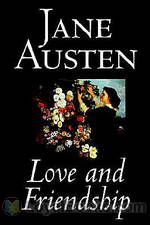 Love and Friendship
Love and Friendship
Begun when she was just eleven years old, Love and Friendship is one of Jane Austen's stories that very few readers may have encountered before. Austen experts feel that this story was written, like many others, only for the pleasure of her family and friends. It is scribbled across three notebooks, in childish handwriting, and the complete work is thought to have been written over a period of six or seven years. It is dedicated to one of her cousins, whom she was very close to, Eliza de Feuillide... | |
By: Jane Collier (1714-1755) | |
|---|---|
 Essay on the Art of Ingeniously Tormenting
Essay on the Art of Ingeniously Tormenting
An Essay on the Art of Ingeniously Tormenting was a conduct book written by Jane Collier and published in 1753. The Essay was Collier's first work, and operates as a satirical advice book on how to nag. It was modelled after Jonathan Swift's satirical essays, and is intended to "teach" a reader the various methods for "teasing and mortifying" one's acquaintances. It is divided into two sections that are organised for "advice" to specific groups, and it is followed by "General Rules" for all people to follow. | |
By: Jean-Jacques Rousseau (1712-1778) | |
|---|---|
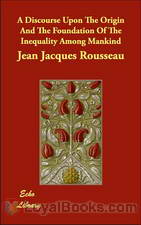 A Discourse Upon the Origin and the Foundation of the Inequality Among Mankind
A Discourse Upon the Origin and the Foundation of the Inequality Among Mankind
This work presents Rousseau’s belief in the profoundly transformational effects of the development of civilization on human nature, which Rousseau claims other political philosophers had failed to grasp. Specifically, before the onset of civilization, according to Rousseau, natural man lived a contented, solitary life, naturally good and happy. It is only with the onset of civilization, Rousseau claims, that humans become social beings, and, concomitant with their civilization, natural man becomes corrupted with the social vices of pride, vanity, greed and servility. | |
By: Jenny Wren | |
|---|---|
 Lazy Thoughts of a Lazy Girl Sister of that "Idle Fellow."
Lazy Thoughts of a Lazy Girl Sister of that "Idle Fellow."
| |
By: Jerome K. Jerome (1859-1927) | |
|---|---|
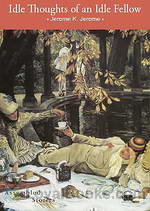 Idle Thoughts of an Idle Fellow
Idle Thoughts of an Idle Fellow
Idle Thoughts of an Idle Fellow, published in 1886, is a collection of humorous essays by Jerome K. Jerome. It was the author’s second published book and helped establish him as a leading English humorist. The book consists of 14 independent articles arranged by themes. | |
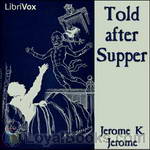 Told after Supper
Told after Supper
It is Christmas Eve, and the narrator, his uncle and sundry other local characters are sitting round the fire drinking copious quantities of whisky punch and telling ghost stories until bedtime, when… But no, I won’t spoil the fun. This is a little gem: Jerome at his tongue-in-cheek best. | |
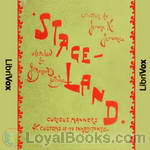 Stage Land
Stage Land
A comic look at the curious habits and customs of the inhabitants of ‘Stage Land’. Dedicated to ‘that highly respectable but unnecessarily retiring individual, of whom we hear so much but see so little, “the earnest student of drama” | |
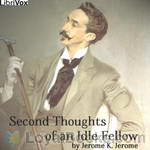 Second Thoughts Of An Idle Fellow
Second Thoughts Of An Idle Fellow
A second volume of humorous essays on various subjects, following the success of Idle thoughts Of An Idle Fellow. | |
 Clocks
Clocks
| |
 Dreams
Dreams
| |
 The Angel and the Author, and others
The Angel and the Author, and others
| |
 Evergreens
Evergreens
| |
 Tommy and Co.
Tommy and Co.
| |
By: Jessie Benton Frémont | |
|---|---|
 The Will and the Way Stories
The Will and the Way Stories
Simply put, this is a book of 9 short vignettes each of which describes a different scenario which demonstrates the age old adage: 'where there's a will, there's a way'. | |
By: Johann Wolfgang von Goethe (1749-1832) | |
|---|---|
 Essays on Art
Essays on Art
Essays on art, letters, thoughts, aphorisms - Goethe's thoughts were dealing with artworks of every branch of arts. He addressed many aspects of the artistic process and described his impressions of works of arts - and even dilettantism - in his essays. Being one of the great masters of german written arts, Goethe used his own skills to express his thoughts: while Section 25 is more of a commented list of pictures in a gallery, two other sections are dramatic readings. Furthermore there are letters, talks and thoughts to entertain - I hope, these essays may function as a worthy treasure-chest for the interested... | |
By: John Addington Symonds (1840-1893) | |
|---|---|
 A Problem in Modern Ethics
A Problem in Modern Ethics
“Society lies under the spell of ancient terrorism and coagulated errors. Science is either wilfully hypocritical or radically misinformed.” John Addington Symonds struck many an heroic note in this courageous (albeit anonymously circulated) essay. He is a worthy Virgil guiding the reader through the Inferno of suffering which emerging medico-legal definitions of the sexually deviant were prepared to inflict on his century and on the one which followed. Symonds pleads for sane human values in... | |
By: John Brown (1810-1882) | |
|---|---|
 Spare Hours
Spare Hours
| |
By: John Bunyan (1628-1688) | |
|---|---|
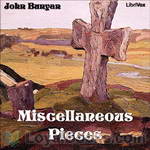 Miscellaneous Pieces
Miscellaneous Pieces
John Bunyan (November 28, 1628 – August 31, 1688), a Christian writer and preacher, was born at Harrowden (one mile south-east of Bedford), in the Parish of Elstow, England. He wrote The Pilgrim’s Progress, arguably the most famous published Christian allegory. In the Church of England he is remembered with a Lesser Festival on 30 August. Bunyan became a popular preacher as well as a prolific author, though most of his works consist of expanded sermons. In theology he was a Puritan, but there was nothing gloomy about him. The portrait his friend Robert White drew, which has often been reproduced, shows the attractiveness of his true character. | |
By: John Burroughs (1837-1921) | |
|---|---|
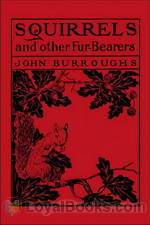 Squirrels and other Fur-Bearers
Squirrels and other Fur-Bearers
Squirrels and other Fur-Bearers, a collection of essays by American naturalist and essayist, John Burroughs, provides fascinating insight into the daily life of small woodland creatures. Included in these essays are Burrough’s personal observations of squirrels, rabbits, mink, and chipmunks, as well as numerous other small mammals. Highly recommended for anyone, both young and old, with an interest in nature and wildlife! | |
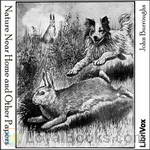 Nature Near Home and Other Papers
Nature Near Home and Other Papers
Nature Near Home is one of many books on natural history by John Burroughs. It is full of simple observations about rural scenes and charming stories about animals, plants, and even people! Burroughs loves the creatures around him and derives great pleasure from his walks and studies in nature’s scenes. | |
 The Last Harvest
The Last Harvest
| |
By: John Butler Yeats (1839-1922) | |
|---|---|
 Essays Irish and American
Essays Irish and American
From the noted artist and father of the celebrated Irish poet William Butler Yeats comes this short collection of essays on the literary life of their age. Included are two short biographical remembrances of the author. - Summary by Larry Wilson | |
By: John Donne (1572-1631) | |
|---|---|
 Devotions upon Emergent Occasions
Devotions upon Emergent Occasions
Devotions upon Emergent Occasions is a 1624 prose work by the English writer John Donne. It is a series of reflections that were written as Donne recovered from a serious illness, believed to be either typhus or relapsing fever. (Donne does not clearly identify the disease in his text.) The work consists of twenty-three parts describing each stage of the sickness. Each part is further divided into a Meditation, an Expostulation, and a Prayer. The seventeenth meditation is perhaps the best-known part of the work... | |
By: John Falstaffe | |
|---|---|
 The Theater (1720)
The Theater (1720)
| |
By: John Fiske (1842-1901) | |
|---|---|
 The Unseen World and Other Essays
The Unseen World and Other Essays
| |
By: John Galsworthy (1867-1933) | |
|---|---|
 Studies and Essays: Quality and Others
Studies and Essays: Quality and Others
| |
 Another Sheaf
Another Sheaf
| |
 Studies and Essays: Concerning Letters
Studies and Essays: Concerning Letters
| |
By: John Milton (1608-1674) | |
|---|---|
 Areopagitica
Areopagitica
A prose tract or polemic by John Milton, published November 23, 1644, at the height of the English Civil War… Milton, though a supporter of the Parliament, argued forcefully against the Licensing Order of 1643, noting that such censorship had never been a part of classical Greek and Roman society. The tract is full of biblical and classical references which Milton uses to strengthen his argument. The issue was personal for Milton as he had suffered censorship himself in his efforts to publish... | |
By: John Muir | |
|---|---|
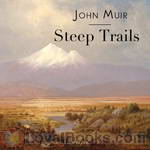 Steep Trails
Steep Trails
A collection of Muir's previously unpublished essays, released shortly after his death. "This volume will meet, in every way, the high expectations of Muir's readers. The recital of his experiences during a stormy night on the summit of Mount Shasta will take rank among the most thrilling of his records of adventure. His observations on the dead towns of Nevada, and on the Indians gathering their harvest of pine nuts, recall a phase of Western life that has left few traces in American literature... | |
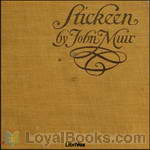 Stickeen
Stickeen
A great dog story, a well told tale — the naturalist and adventurer John Muir recounts how he and his companion, a dog named Stickeen, each, alone, confronted and conquered their fears of an icy Alaskan glacier in 1880. | |
By: John Ruskin (1819-1900) | |
|---|---|
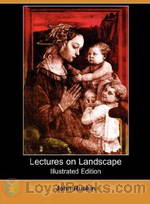 Lectures on Landscape
Lectures on Landscape
A series of lectures on landscape painting delivered at Oxford in 1871, by artist, critic, and social commentator, John Ruskin. | |
 The Seven Lamps of Architecture
The Seven Lamps of Architecture
The Seven Lamps of Architecture, published in May 1849, is an extended essay written by the English art critic and theorist John Ruskin. The 'lamps' of the title are Ruskin's principles of architecture, which he later enlarged upon in the three-volume The Stones of Venice. To an extent, they codified some of the contemporary thinking behind the Gothic Revival. At the time of its publication A.W.N. Pugin and others had already advanced the ideas of the Revival and it was well under way in practice... | |
 On the Old Road Vol. 1 (of 2) A Collection of Miscellaneous Essays and Articles on Art and Literature
On the Old Road Vol. 1 (of 2) A Collection of Miscellaneous Essays and Articles on Art and Literature
| |
 On the Old Road, Vol. 2 (of 2) A Collection of Miscellaneous Essays and Articles on Art and Literature
On the Old Road, Vol. 2 (of 2) A Collection of Miscellaneous Essays and Articles on Art and Literature
| |
By: John Stuart Mill (1806-1873) | |
|---|---|
 Three Essays on Religion
Three Essays on Religion
The Three Essays on Religion were written at different times during Mill's life, and only published after his death. The first two, 'Nature' and 'The Utility of Religion' date from the 1850s - the period between the publication of 'The Principles of Political Economy' and 'On Liberty'. The third longer essay, 'Theism' was written between 1868 and 1870. The three essays were published posthumously in 1874. | |
By: John Wilson (1785-1854) | |
|---|---|
 Recreations of Christopher North, Volume 1
Recreations of Christopher North, Volume 1
| |
By: Jonathan Swift (1667-1745) | |
|---|---|
 A Modest Proposal
A Modest Proposal
A satirical essay written by one of the most renowned satirists, Jonathan Swift, A Modest Proposal expresses the author’s exasperation with the ill treatment of impoverished Irish citizens as a result of English exploitation and social inertia. Furthermore, Swift ventilates the severity of Ireland’s political incompetence, the tyrannical English policies, the callous attitudes of the wealthy, and the destitution faced by the Irish people. Focusing on numerous aspects of society including government exploitation, reckless greed, hypocrisy, apathy, and prejudice, the essay successfully exemplifies Swift’s satirical skills... | |
By: Joseph Addison (1672-1719) | |
|---|---|
 Essays and Tales
Essays and Tales
| |